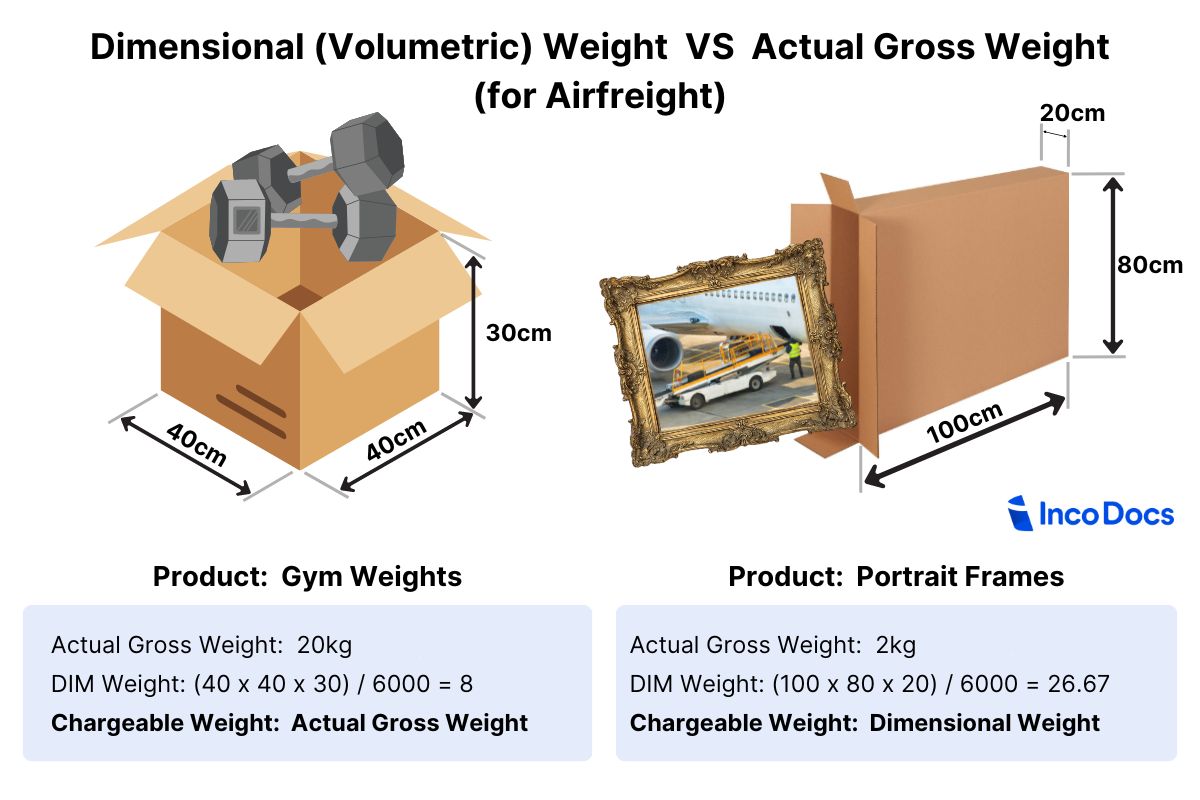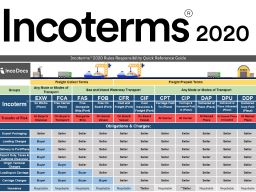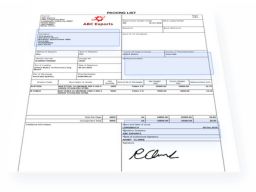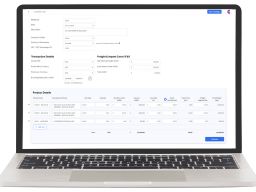CBM Calculator for Airfreight
How to Use the CBM Calculator for Airfreight
To use the CBM calculator for airfreight, enter the details of each package, to instantly calculate the package CBM volume, total volume, and total weight of each shipment.
Use the CBM calculator by following these steps:
- Enter the length, width, height and weight of each package, and the number of packages. Click ’Add Package’ to add new package details as required.
The CBM calculator will give you the following calculations:
- Package Volume (CBM m3)
- Total Volume (CBM m3)
- Total weight (Kg)
- If you’d like to calculate the total chargeable amount for the shipment, enter the ‘Freight Rate Per Kg’ that has been quoted to move this shipment.
At the bottom, the ‘Total Chargeable Amount’ to move this airfreight shipment will be shown.
What is CBM in shipping?
The CBM Calculator measures shipment volume in cubic meters, which is important in shipping and logistics. CBM stands for Cubic Meter (m3), which confirms the total space that your shipment occupies. In shipping, CBM (cubic meter) is a standard unit of measurement for freight volume. This is important for international trade.
The CBM Calculator helps by providing shippers with individual and overall packaging cubic volumes and weights. When shipping goods via FCL, this helps shippers to plan the loading of shipping containers. When shipping goods via LCL cargo, it helps shippers understand the freight costs.
Shipping companies or freight forwarders usually charge based on volume or weight, whichever is greater. Understanding CBM and weight data will help shippers in many ways, including:
- Understand the total freight costs that the shipment volume will incur
- Calculating the Landed Costs of imported products. Use the IncoDocs Landed Cost Calculator here.
- Plan purchasing quantities
- Plan the loading of shipping containers
CBM Calculation for Airfreight Explained
For an airfreight shipment, the chargeable freight rate depends on the CBM volume and the Actual Weight or the DIM Weight (Dimensional Weight) of the shipment, whichever is greater. Read below how to calculate the CBM and compare it to the DIM weight and actual gross weight, to work out the chargeable freight cost.
Dimensional Weight / Volumetric Weight Calculations
DIM Weight (also known as Dimensional Weight, or Volumetric Weight) is a key number used to calculate the chargeable weight for different modes of transport - via, Sea, Air, Courier/Parcel, Road or Rail transport. It calculates the amount of space that a shipment will take up when it is transported and compares it to the actual gross weight of a shipment.
Carriers, freight forwarders and courier companies will calculate the Dimensional Weight by multiplying the length x width x height of a package, and then divide it by a standard divisor (called the DIM Factor, which is 6000 for airfreight).
This ensures that even if packages are very large and lightweight, or very small and heavy, that they are charged accordingly by the carrier. For airfreight the DIM factor is 6000. It’s important to note that the DIM factor varies per mode of transport.
- Airfreight: Length (cm) x Width (cm) x Height (cm) / 6000
- Courier/Parcel: Length (cm) x Width (cm) x Height (cm) / 5000
- Seafreight: Length (m) x Width (m) x Height (m) x 1000. For seafreight shipments, carriers will multiply the length x width x height (in meters) and then multiply it by 1000.
- Roadfreight: Length (cm) x Width (cm) x Height (cm) / 3000
- Railfreight: Length (cm) x Width (cm) x Height (cm) / 3000

How to Calculate the Chargeable Freight for Airfreight using DIM Factors.
For any particular shipment, the chargeable freight rate depends on the CBM volume and the Actual Weight or the DIM Weight (Dimensional Weight) of the shipment, whichever is greater.
It’s important to understand that Sea, Air or Road carriers will use the greater of the Actual Weight or the Dimensional Weight (also known as the volumetric weight, or cubed weight) to determine the chargeable cost to move the freight. For example, light but bulky items may cost more due to the large space that they occupy.
When calculating the chargeable weight, shipments via Sea, Air and Road will use a different DIM Factor (Dimensional Weight Factor, also known as the conversion factor/conversion rate). The different factors, conversion rates and formulas for the different modes of transport are as displayed in the table below.
| Mode of Transport | DIM Factor | Conversion Rate (kg per CBM) | 1 CBM to kg | Formula to Calculate Dimensional Weight |
|---|---|---|---|---|
| Seafreight | 1000 | 1000 | 1 CBM = 1000kg | Length (m) x Width (m) x Height (m) x 1000** |
| Airfreight | 6000 | 167 | 1 CBM = 167kg | Length (cm) x Width (cm) x Height (cm) / 6000 |
| Parcel / Courier | 5000 | 200 | 1 CBM = 200kg | Length (cm) x Width (cm) x Height (cm) / 5000 |
| Roadfreight LTL | 3000* | 333* | 1 CBM = 333kg | Length (cm) x Width (cm) x Height (cm) / 3000 |
| Railfreight | 3000* | 333* | 1 CBM = 333kg | Length (cm) x Width (cm) x Height (cm) / 3000 |
How to Calculate the Chargeable Freight for an Airfreight Shipment?
If you ship goods via airfreight, the carrier or freight forwarder will charge for the freight per 1m3 or per 167kg (a DIM factor of 6000 is used). If an airfreight rate is quoted at $700USD per CBM/MT, let’s look at 2 examples below.
Package dimensions: 180cm x 100cm x 100cm. Gross Weight: 160kg.
- Dimensional Weight: 180 x 100 x 100 / 6000 = 300kg
- Gross Weight: 160kg
Since the dimensional weight is 300Kg, which is greater than the gross weight of 160Kg, the freight cost will be $7USD x 300Kg = $2100USD
Package dimensions: 70cm x 60cm x 60cm. Gross Weight: 150kg.
- Dimensional Weight: 70 x 60 x 60 / 6000 = 42kg
- Gross Weight: 150kg
Since the Gross Weight is 150Kg, which is greater than the dimensional weight of 42Kg, the freight cost will be $7USD x 150Kg = $1050USD
Frequently Asked Questions
What is the Difference between Sea Freight and Air Freight CBM and Chargeable Weight Calculations?
Air freight charges are often based on the greater of actual weight or volumetric weight. This is calculated differently from sea freight.
- Air freight: DIM factor 6000. This means 1 cubic meter CBM is considered to be equivalent to 167kg. Air freight is used for larger, bulkier, and higher-volume shipments. These shipments are often palletized or packed in larger containers.
- Courier / Parcel: DIM factor 5000. This means 1 cubic meter CBM is considered to be equivalent to 200kg. These services are used for smaller, lighter packages intended for direct delivery to consumers or businesses.
- Sea freight: DIM factor 1000. This means 1 cubic meter CBM is considered to be equivalent to 1000kg. Sea freight is used for larger, bulkier, and heavier shipments. These shipments are often containerized, with full container loads (FCL) or less than container loads (LCL).
This shows that seafreight is more volume-based. It can accommodate larger quantities of goods without the same weight restrictions as air freight or courier/postal shipments.
What is the Difference between Air Freight and Courier / Parcel CBM and Chargeable Weight Calculations?
Although both ’Air freight’ and ’Courier/Parcel’ shipments both travel on aircraft, the DIM factors for air freight and courier/parcel shipments are different. This difference arises from several factors, including the nature of the shipments, operational efficiencies, and pricing strategies of the respective services.
- Air freight: DIM factor 6000. This means 1 cubic meter CBM is considered to be equivalent to 167kg. Air freight is used for larger, bulkier, and higher-volume shipments. These shipments are often palletized or packed in larger containers.
- Courier / Parcel: DIM factor 5000. This means 1 cubic meter CBM is considered to be equivalent to 200kg. These services are used for smaller, lighter packages intended for direct delivery to consumers or businesses.
How to Create a Commercial Invoice and Packing List for Airfreight Shipments?
Shipping goods via airfreight will often involve the shipment to clear customs in the country of import. Shippers must provide detailed shipping documentation, such as a Commercial Invoice, Packing List, Declarations and other shipping documentation. which will be used to submit information to local customs departments.
How do you calculate the CBM of an irregular shaped box?
Calculating the cubic meter of an irregular-shaped carton is a bit different, but maintains the same formula. First, find the maximum length, width and height of the carton. Treat it as if it fits into a regular cuboid. Measure the maximum length, maximum width and maximum height of the carton. Use these measurements as if they form a regular carton.
For an irregular shaped carton, the maximum length is 0.4m, the maximum width is 0.3m, and the maximum height is 0.3m.
- The formula is: Length (m) x Width (m) x Height (m) = CBM (m3)
- The calculation is: 0.4m x 0.3m x 0.3m = 0.036 CBM m3
CBM Calculation for Multiple Boxes or Cartons
Calculating CBM for multiple boxes or cartons is simple. First, calculate the CBM for one box/carton using the formula: Length (m) x Width (m) x Height (m) = CBM.
Once you have the CBM of one box/carton, multiply that by the number of boxes/cartons to get the total volume in CBM.
A shipment contains 12 cartons. Each carton dimension is 80cm x 40cm x 40cm.
- CBM per carton is 0.8 x 0.4 x 0.4 = 0.128m3
- CBM for 12 cartons = 0.128m3 x 12 = 1.536m3
How to Calculate CBM for Pallets
To calculate the CBM for pallets it is quite simple. Multiply the Length x Width x Height of your package in meters (be sure to include the pallet bast in your dimensions). The result is the cubic meter volume (m3) for pallets. See below formula and example for CBM calculations:
A pallet and it’s contents is 1.2m long, 1.2m wide, and 1.5m high
- The formula is: Length (m) x Width (m) x Height (m) = CBM (m3)
- CBM for pallet calculation is: 1.2m x 1.2m x 1.5m = 2.16 CBM (m3)
If you have multiple pallets, multiply the CBM of one pallet by the total number of pallets to get the total CBM: 2.16m3 x 4 pallets = 8.64m3


